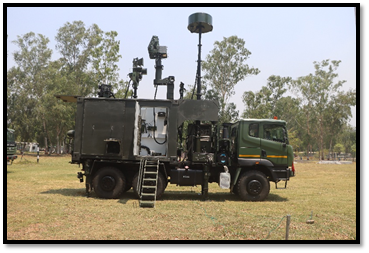Akashteer 2.0: DAC Previews 500+ Unit Expansion Post-MoD Surge
In a closed-door briefing at South Block today, the Defence Acquisition Council (DAC) previewed the most ambitious phase yet of India’s integrated air defense revolution: Akashteer 2.0—a networked, mobile, tri-service air defense system now slated for 500+ additional units by 2030.
The catalyst? The Ministry of Defence’s unprecedented 51% capital expenditure utilization in H1 FY26—₹92,211 crore already committed, including 200+ Akashteer systems delivered to the Army’s Air Defence Corps.
But Akashteer 2.0 is not just more units. It’s a paradigm shift.The system integrates:
- QRSAM (Quick Reaction Surface-to-Air Missile) – 30 km range, 8 missiles per launcher
- DRDO SPYDER – Python-5 and Derby missiles
- Upgraded Schilka – 30mm CIWS for drone swarms
- AI-driven battle management – trained on AUSTRAHIND 2025 urban drone defense data
Coastal nodes will extend protection to Scorpène-class submarines during surfacing and ASW vessels like INS Androth, creating a layered shield from 50 m to 50,000 ft.
Production is already ramping:
- BEL Hyderabad: 300 command posts
- Tata Advanced Systems: 200 launchers
- L&T Pune: Radar arrays with gallium nitride (GaN) modules
The November DAC agenda is expected to clear ₹28,000 crore for:
- 200 Akashteer 2.0 systems for Army (Himalayan + Western Desert)
- 150 for Navy (coastal + carrier battle groups)
- 150 for IAF (forward air bases)
- Integration with Project Kusha (250 km endo-atmospheric interceptor)
For the first time, a single Akashteer node can hand off a target from a Netra AEW&C to a Tejas firing Astra Mk-2 to a QRSAM battery—all in under 40 seconds. This is Atmanirbhar Bharat in action: from reactor fuel to missile guidance, 94% indigenous.
As drone swarms and hypersonic threats redefine modern warfare, Akashteer 2.0 ensures India’s shield is not just strong—it’s smart, silent, and sovereign.




Pingback: Army-DTU MoU: Forging AI-Driven Defence Innovation in India’s Heartland - DefenceNiti.com